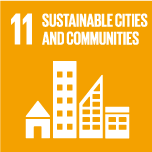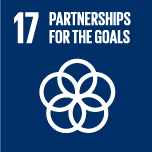Identifying the vulnerable population using de-identified telecom data and satellite images for enhancing disaster management
| Principal Investigator (Affiliation) |
|
|---|---|
| Co-investigator |
|
| Research Participant |
|
| International Coordinator |
|
| Research Institutions in Japan | The University of Tokyo |
| Cooperating Organization in Japan | |
| Partner Country | Republic of the Union of Mozambique  |
| Research Institutions in Mozambique | |
| Cooperating organization in Mozambique | Eduardo Mondlane University / Instituto Nacional das Comunicações de Moçambique / Instituto Nacional de Estatistica |
| Support Organization | United Nations / World Bank Group |
| General Description of the Research Project |
Gaps to be filled by this project Timely and granular population statistics is crucial for effective disaster management. Particularly in a resource poor setting, the source of population data is limited, and data could be easily outdated if they have to rely on official statistics alone such as population censuses. Telecom data, which are passively collected by mobile network operators for billing and network management purposes, are updated with each network event—a call, an SMS, and data communication. These generate highly localized and frequent digital footprints as timestamps associated with the cell tower location of the event in near-real time. Given the wide coverage and ubiquitous usage, especially in resource-poor environments, telecom data are a critical data source to inform monitoring and policy design for disaster management. Our approach We develop a system to identify the time and seasonally varying distribution of the vulnerable population by using the de-identified telecom data and satellite images for enhancing disaster management. Proposed system can estimate the spatial distribution, mobility patters, and headcount of the vulnerable population. Output of the system enables responders, policy makers, and responders to produce the disaggregated statistics of the vulnerable population, which are not effectively covered by official statistics alone. Impact of this project Our approach particularly benefits resource poor countries to create population statistics because they are often most in need but do not have enough capacity and resources to produce timely and actionable statistics. This is because the population coverage of the telecom data and satellite images is almost ubiquitous. Algorithms used in the developed system will be published as an open-source package on GitHub that is an open platform for sharing and building software. It enables our approach to scale in other countries. |
| Links | Shibasaki & Sekimoto Laboratory |






